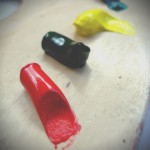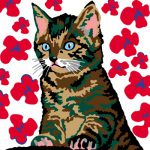Kinds Of Bells
There are many different kinds of bells to be found, including cowbells, musical bells, brightly colored bell peppers and even vibrant bluebells growing in the woods and forests.
The song ‘Jingle Bells’ refers to sleigh bells. Also known as cascabels, they are made of metal and very small. These kinds of bells are hollow, with a smaller pie e of metal inserted inside so that they make a jingling sound when shaken. In the beginning of the Middle Ages, particular bells were used mainly in religious ceremonies and the like. In later Middle Ages, and up until the fourteenth century, bells also became popular during secular pageantry like knightly tournaments.
Musical bells are often hollow devices made of metal that make a ringing sound when struck. There are many different kinds of bells to be found in this category, apart from sleigh bells, including a variety of different hand-bells and cowbells.
Cowbells were originally used, as the name infers, in cattle farming. They are hung around the necks of free-range livestock. The sound of the bells would alert the owners were they to to wander off. These kinds of bells were and are actually used on many other kinds of animals, like donkeys, sheep, horses , goats , camels , llamas, reindeer and even elephants! Yet they are most commonly known as ‘cowbells’ or ‘cow bells’ because of their wide use in the cattle farming industry. The earliest attestation of bells used for livestock can be traced back to the late fourteenth to early fifteenth century, where cowbells were worn by only the leading breeds of livestock. The wider wearing of the cowbell was a slow, gradual process. The earliest use of bells of the Early Modern Period.
A trychel (Trychle in Alemannic, Treichle, Treichel or Trichel) is a very big cow bell commonly found and used in Switzerland. Instead of being made out of the traditional cast metal, these kinds of bells are made out of sheet metal, hammered into shape. This way of fashioning the bell results in a clanking sound which gives a less clear and clean sound, but on the other hand, a less heavy bell is made which is not so difficult to carry around. Trychel processions are important in Swiss folklore. These traditional customs are associated with what is known as the Wild Hunt and Perchta taking place around the time of the winter solstice.
These kinds of bells are known as ‘Kuhglocke’ in Southern Germany. There are certain percussion instruments that also look like cowbells. These kinds of cowbells have both European and American varieties, differing slightly in shape and size. They typically take the form of a trapezium, cylinder or a cup, and are either welded or the molten metal poured into moulds. Some are hand held whilst others are mountable. Some American manufactured cowbells include Sargent musical cowbells, made in CT,and Deagan cowbells, made in Chicago, IL. The very last Cowbell manufacturer remaining in the US, Bevin Brothers Manufacturing, has been making bells since 1832 in the region of East Hampton, Connecticut.
Other kinds of musical bells include hard handled handbells; also known as ‘school bells’, 4-in-hand handbells; with or without resonator tubes, malleted standing bells and the amazing, ancient Five Note Han Dynasty Royal Bell Instrument.






